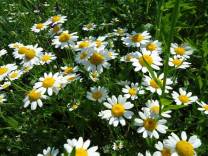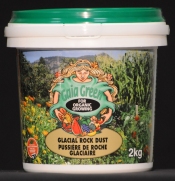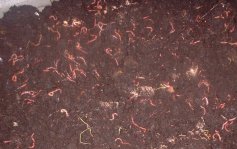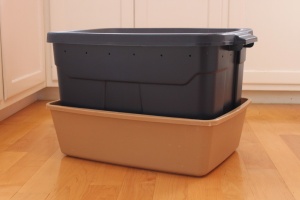I find this to be a most rewarding time in the garden…the time when I can collect seeds from the plants that have done the best in my garden and been allowed to grow out to maturity in order to collect their seeds for gardens of the future.
Earlier in the season I would chose the best most robust plants to not harvest for the table but to allow to grow out to full maturity. I mark those selected in some way, perhaps with a ribbon, twist tie or string, so they won’t accidentally be harvested on another day. Sometimes this can be a real exercise in restraint because it is sooo tempting to pick that luscious fruit or vegetable and bite into it. But restraint is a must, as selection requires judgement of what are the most healthy, pest and disease free plants in the garden in order to produce more of the same in the future.
Ideally, I try to pick a dry, windless day for collecting and hopefully there has not been too much in the way of rain for a few days previously. Wet or damp seeds tend to get mouldy and it takes more effort and time to make sure they are good and dry before being put in storage but sometimes the weather doesn’t cooperate and you just have to do what you can when you can. I often collect on more than one day as the plants don’t usually all mature at once. I find it relaxing to just walk through the garden and appreciate each of the stages the garden goes through over the season.
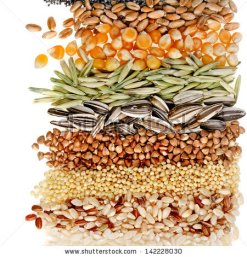
Harvesting Seeds ~ Most plants seeds are easy to harvest. As the season progresses the plant will flower, (bees or other pollinators are pretty darn important right about here) the flower will fade, a seed pod will form or a fruit with seeds hidden inside will develop and the seeds will start to swell, usually bright and fresh at first then over time the pod and seeds will dry out turning into light brownish seed clusters of some form, depending on the plant variety. But ultimately I need the patience to allow the plant to fulfil it’s life cycle. Of course, plants come in a wide variety of forms, shades and colours so the above description is just a very general guideline and ultimately you just have to pay attention and observe how your plants evolve over the season to determine what form the seeds will take.
For example, squash plants will have their seeds inside the husk of the mature squash fruit, similarly tomatoes have their seeds inside the ripened flesh of the fruit, whereas with lettuce or spinach, it’s just a matter of waiting for the seeds to be ready to fall off the matured plant stalk where the flowers once were. Keep an eye on those plants as the seed could end up all over the ground if a windy day happens to occur.
Identifying Seeds ~ I can’t emphasize enough how important it is to make sure you identify the seeds as they are being collected. Carry a pen or marker and some scraps of paper with you while you are collecting in the garden. I’ve reached an age where I have to write down the name of the plant immediately or I’ll be shaking my head later trying to recall which seed is which. It’s only from years of familiarity that I can recognize many of the seeds and can occasionally get away without having a pen and paper with me while I’m collecting. But I’m hooped if I am growing 2 or more named varieties of the same plant.
Preparing Seeds ~ Some seeds need a little more in the way of preparation than others before being put in storage. For example, once the squash has thoroughly ripened I would simply open the husk to scoop the seeds out, wash them thoroughly to get rid of all the strings and fleshy particles that may be attached, then spread the remaining seeds out onto a dry surface, such as a paper towel or newspaper and allow them to dry, flipping them over occasionally for few days to ensure they don’t stick to the surface. Once I know they are completely dry then they will be ready to be put in storage.
Many seeds can just be collected by letting the seed fall off the mature plant stalk into a paper bag or container of some sort. Paper bags are ideal because they keep the seeds dark, dry and allow for air flow, where a plastic bag would harbour some moisture and perhaps cause the seed to mold.
Some seed heads can just be turned or gently bent into the bag and shaken off the stalk, while others need to be pulled off the stalk and perhaps allowed to ripen a little longer. Usually there is some chafe in the seeds (dried plant particles or dust & grit), that needs to be cleaned out of the seeds before they can be stored. The chafe is usually lighter than the seeds and can be gently blown away leaving only the seed behind.
Storage ~ I use a variety of storage containers. Typically anything that can be sealed to keep moisture out is good. Most commonly I use a zip-lock bag (with a permanent marker to write on the outside exactly what variety of seed it is inside and the date when it was harvested) and I have a ‘rubber maid’ type sealed box container that I organize them all in, so I can just carry the whole container out to where I am going to be doing some seed starts. But often for larger seeds like peas or corn, I may also use a small mason jar. Once my seeds are put in sealed containers of some sort, I can store those containers in a dark, dry, cool place, until I need them again and if I really want to preserve seeds for many years, then I may place them in the deep freeze.
Seed collecting and using these seeds year after year from the same garden allows plants to evolve and become the best they can be in the environment they are being grown in . In this way the resulting plants are specifically adapted to your garden and can optimize the growing conditions of that garden, producing a better healthier specimen that will grow to its full potential year after year.
There is just nothing like the feeling I get knowing that not only is most of the food on our table, grown by our own hands, but the best seed for our gardens of tomorrow are just waiting for their turn to explode into robust fruits and vegetables in the next season and the season after that and the season after that…
There ‘s lots more on this subject but I tried to at least give a basic idea of how to approach seed collecting and I really encourage everyone to do this in their gardens as much as they can. You will be surprised at how easy it can be and how abundantly rewarding it is.
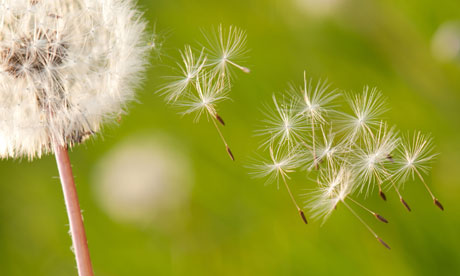
Happy Living!
Messy Shepherdess
re-blogged from Land Share Canada: http://landsharecanada.com/users/messy-shepherdess/blog/seed-collecting/


